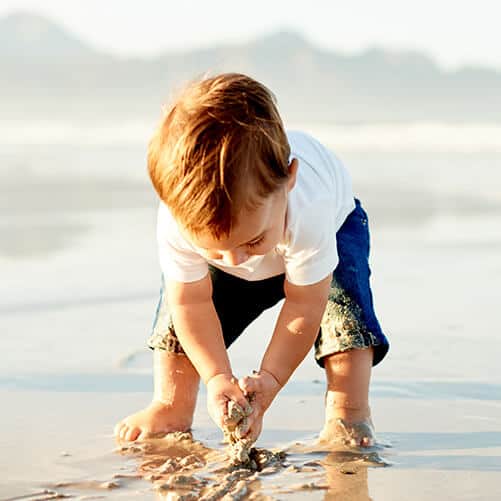12 August 2021
The World Egg Bank has just published (August 2021) an industry report looking at how the Covid-19 pandemic has affected egg and sperm banks over the last 12 – 16 months. It explores three key issues: (1) what does the near-term hold for intended parents seeking donor eggs or sperm? (2) how have health and economic trends during the Covid-19 pandemic affected egg and sperm bank services? (3) how can intended parents and healthcare providers navigate the ongoing uncertainty and potential disruption caused by Covid-19 in the coming months?
Whilst The World Egg Bank industry 2021 report identifies some important emerging trends and issues, it does not however represent a truly comprehensive analysis of donor egg and sperm delivery now and into the future. Collection, processing, ownership and protection of genomic data of donors, intended parents and donor conceived individuals must be safeguarded. The nature of its interface with rapid developments in genomic research and technologies will also increasingly present a range of challenges for healthcare providers, intended parents and policy makers tasked with shaping national security, health, economic and foreign policy. How we successfully navigate donor egg and sperm delivery in an assisted reproductive context in future will increasingly need to encompass greater understanding about genetic profiles, risk and minimization of genetic diseases, ethical issues of social justice and equality and the application of powerful and transformative genome editing technology.
Near-term outlook for intended parents seeking donor eggs and sperm
Whilst more data is still required for the period March 2020 – June 2021, The World Egg Bank reports that the number of egg and sperm donations is likely to have fallen significantly below pre-pandemic levels due to:
- Lockdowns which prevented and restricted in-person visits by egg and sperm donors.
- Reductions in ‘non-essential’ medical procedures which may also have slowed egg retrievals and sperm collection.
Similarly, the overall picture suggests a general decline in fertility treatments with donor eggs or sperm due to:
- Curtailment of ‘non-essential’ medical procedures which likely reduced IVF cycles.
- Lockdowns which prevented or reduced in-person visits by intended parents to clinics.
- Restrictions and reductions in cross-border travel which likely impacted donor egg and sperm procedures.
Health and economic trends impacting egg and sperm banks during the Covid-19 pandemic
The World Egg Bank reports that the financial disruption and loss caused by the Covid-19 pandemic resulted in a fall in global GDP of at least 12 trillion in 2020 and that the economic impact will continue to be felt in the near and medium term. It reports that this has led to some egg and sperm banks experiencing financial difficulties. It has also resulted in a record breaking wave of private equity and venture capital acquisition of egg and sperm banks. Whilst this corporate strategy aims to drive strong profits and financial returns for investors, The World Egg Bank reports that this is not necessarily good news for intended parents and IVF clinics. It warns of the challenges of increased virtualization of egg and sperm bank provision and of the merging of multiple operations with varying quality control, staff expertise, donor standards, screening procedures, technical capabilities and reporting metrics. It goes on to state that this can lead to variable quality and viability issues.
The World Egg Bank also reports that these intensifying economic trends can give an inaccurate impression of egg and sperm bank services. The continued growth in mergers, digital services and low-cost disparate third party egg and sperm providers can create the impression of increased availability when in reality many egg and sperm banks are competing for a finite supply of donor gametes. It goes on to highlight the significant challenges associated with maintaining transparent, end-to-end, chain of control of donor eggs and sperm in a virtual or non-integrated context. Corporate cost-cutting and profit driven activity can also give a false perception to intended parents of reduced costs when in reality there could be many hidden challenges and costs including: greater variability in eggs and sperm and a resulting decline in quality and viability, increased number of procedures, more clinic visits, delays and lost time. It also gives some examples of how egg and sperm banks’ profit driven activity may conflict with the wishes of intended parents by:
- Vitrifying every mature egg harvested or sperm collected, regardless of potential quality issues.
- Providing ranges in the number of vitrified eggs provided in a cohort (e.g.“5- 8”) instead of specifying a fixed number of eggs provided in a cohort (e.g. “6”). This can result in intended parents expecting and paying for 8 eggs, but receiving only 5 for the price paid.
- Providing quantities of sperm that are greater than required for a successful outcome in order to charge more and increase profit.
The World Egg Bank report also warns about the increased legal risks and ambiguity for intended parents and donor conceived children. It states that children born from donor eggs and sperm procured by brokers sourcing from Eastern Europe, lower-income countries, or the third world may be unable to trace vital historical data such as biological origins, testing and screening records, health and genetic factors and indicators. This can create significant issues and gaps for intended parents as they navigate family life and donor conceived individuals seeking information about their genetic and health origins in later life.
How can intended parents and fertility clinics navigate future uncertainty and disruption in egg and sperm supply?
The World Egg Bank report states that intended parents should take greater precautions to protect themselves, their children and the long-term future of their families by:
- Identifying egg and sperm banks that guarantee transparent, integrated, end-to-end chain of control of their donor eggs and sperm.
- Looking for a single set of enforceable standards applied across all phases, protocols, processes and staff that assures a non-variable outcome and the highest quality for donor eggs and sperm. For example, the level of expertise needed for an embryologist to successfully vitrify eggs should be seen in the embryologist warming and fertilizing the eggs and only eggs that have matured in a donor’s follicle should be provided to intended parents (rather than collecting immature eggs and growing them in media to “maturity” to boost profits).
- Identifying egg and sperm banks offering an integrated facility where the whole process is conducted at one location to include: donor recruitment, donor screening and management, matching and support, retrieval, vitrification, warming, clinical support, record-keeping, and reporting.
- Selecting egg and sperm banks which offer comprehensive, end-to-end reporting and long-term recordkeeping to maximise verifiable documentation.
The World Egg Bank report concludes that intended parents and healthcare providers should expect a surge in demand for donor eggs and sperm at the same time that supply may be limited at some egg and sperm banks. It warns that increasing corporate consolidation of egg and sperm banks may provide the appearance of greater availability and lower prices, when in reality there are likely to be lower quality eggs and sperm producing fewer pregnancies with hidden costs. It also warns about a proliferation of low cost unsustainable guarantees from brokers importing eggs and sperm from third world economies with unclear or untraceable practices.
Summary
Demand for and access to assisted reproductive technology (ART) and donor eggs and sperm will continue to be an important feature of family building moving forward. Whilst the impact of the Covid-19 pandemic may continue to be felt across the fertility sector in the short term, it also brings with it a significant increase in genomic activity, awareness and understanding that will continue to influence approaches to ART, egg and sperm donation and the utilization of donor gametes for family building purposes. How we procure, safeguard and use eggs, sperm and embryos will increasingly raise medical, legal, ethical and wider societal issues associated with the health, wealth and security for all nations.
Need a fertility lawyer or a family lawyer? If you would like to discuss your family building needs or you would like specialist fertility and family law advice contact Louisa Ghevaert by email louisa@louisaghevaertassociates.co.uk or by telephone +44 (0)20 7965 8399.



